Hyundai Venue [2019-2022] SX 1.0 (O) Petrol [2019-2020]
- Venue [2019-2022]
- 360° View
- Specs & Features
- Variants
- Colours
- User Reviews
Variant
Hyundai Venue [2019-2022] SX 1.0 (O) Petrol [2019-2020] Review
Introduction

The compact SUV segment was once dominated by the Ford EcoSport and is now teeming with many more players like the Maruti Suzuki Vitara Brezza, Tata Nexon, Mahindra XUV300, Honda WR-V, etc. With a rise in demand for such SUVs and crossovers, every carmaker wants to have a product that fulfils this particular need of the Indian buyer. Hyundai too has come up with such a product. Yes, the car in question is the new Venue. This new offering from Hyundai sits below the Creta in the brand’s Indian line-up and comes in 11 variants. These include seven petrol and four diesel variants across four trim levels – E, S, SX, and SX(0). How good a product? Our road test will tell.
Design and style

The new Venue has been conceived using the same design language as its other Hyundai siblings. Naturally, it has the same basic design cues which are clean with simple lines and striking details just like the other models. That said, the Venue has a few distinctive bits. For example, the bold chrome grille and an unusual, but new headlamp position in the bumpers surrounded by bright DRLs. The latter will be seen on more models soon and we will get used to it with time. In fact, the overall proportions and dimensions make it a compact car. And yet, the muscular styling upholds its macho looks and stance. The striking alloy wheels, roof rails and tastefully designed rear help its case further in looking like a premium compact SUV.

Interior

Like the exterior, the interior has been thoroughly refreshed and brought in line with current Hyundai standards. The all-black theme doesn’t help in brightening up the cabin, but it won’t get dirty in the long run. The dashboard has ergonomically placed elements like the air-con vents and the new Arkamys tablet-like touchscreen music system. The overall fit and finish is typical Hyundai and not much to fault at. Many storage and stowage places make it a practical cabin. Seats are nice and broad with good side and under-thigh support. Then, all-round visibility is good too.

The only Achilles heel will be then that three occupants in the rear seat are not just going to rub their shoulders, but might have to overlap to adjust. Otherwise, headroom and legroom are sufficient for anyone to be comfortable enough. Also, they might have to make do with door pockets big enough for a bottle and nothing else. But then, that’s accounted for by the seatback pockets for both front seats. Even though they might eat into the limited knee-room but are generous enough. The rear seat gets the split type fold arrangement which aids in accommodating different types of baggage if the large 350 litre boot doesn’t suffice one’s needs.

Safety and equipment

Right from the entry-level base trim, the Venue comes standard with dual front airbags, ABS, seat-belt reminders and rear parking sensors. However, the top-spec trims of the car are handsomely packed with features like DRLs, automatic projector headlights and fog lamps, key-less entry, push-button start/stop, a sunroof and automatic climate control. Then, there’s a rear camera paired to an 8.0-inch touchscreen infotainment system, which is Android Auto and Apple CarPlay compatible. What distinctively differentiates the Venue from its rivals is that it offers a wireless charging dock, fast USB charging and even an air purifier.

Still, the highlight of the Venue is Hyundai’s Blue Link connectivity technology, which comprises 33 features that span vehicle management, safety, security, location-based services, remote access, alert services and AI-based language inputs. It utilises an embedded Vodafone-Idea SIM card for connectivity. A much-appreciated effort by Hyundai in connected car technology!

Engine and Performance

As mentioned earlier, the Hyundai Venue gets three engine options. One is the entry-level 1.2-litre petrol with 82bhp and 115Nm of torque output. In contrast, there's a high-tech 1.0-litre, three-cylinder, direct-injection turbo-petrol that puts out 118bhp and 172Nm of torque. And then, there's the most preferred diesel for the Indian market. It gets the 1.4-litre four-cylinder motor that puts out 89bhp and 220Nm of torque. There's a choice of three different gearboxes - the more powerful 1.0 turbo-petrol will be offered with either a six-speed manual or a seven-speed dual-clutch auto. Meanwhile, the 1.2 petrol gets a five-speed manual and the 1.4 diesel comes mated to a six-speed manual.

What we have first tested here is the new 1.0-litre turbocharged petrol mill which is a powerful one for a car weighing a little over a ton (1,140kg). It's very smooth, quiet and yet has a nice sporty note to it when revved. And boy, it feels outright quick off the mark with the 0-100kmph sprint achieved in just 11.49 seconds. And despite nicely pulling from low revs like 1,500rpm, it gets a second wind post 2,000rpm to get going even faster. And even if it revs clean to 6,500rpm, the power build up tapers off after 5,500rpm hinting the top-end isn't that strong. Nonetheless, it's good to help push the car past slow traffic and great enough to keep momentum without constant changing of gears. The roll-on tests portray this as the 20-80kmph run in third gear takes 11.85 seconds and the 40-100kmph sprint in fourth is handled within 13.75 seconds. The six-speed transmission here manages to complement the torque available. This gearbox is precise with short throws, gear shifts light to use and slot in well. Interestingly, the clutch complements it further by being well-weighted and light enough to ease things while driving amidst city traffic.

The diesel, on the other hand, isn't as quiet as the petrol, but silent and refined by the segment standards. And despite weighing 1,250kg, this set-up never feels underpowered. Sure, it doesn't feel as peppy as the turbo petrol but provides adequate performance for the city and the highway especially with all that torque. Keep the revs between 2,000-3,000rpm and the engine performs with gusto. Sure, you have to use the gearbox with tall gearing here quite often, but whenever it’s in the meat of the power band, there's no doubting the car's cruising capabilities. Attaining and maintaining triple-digit speeds feels like a breeze. It achieved the 0-100kmph sprint in 12.87seconds and took 14.05 seconds to accelerate from 40-100kmph. However, it shined in the in-gear acceleration from 20-80kmph as it completed this run in 10.29 seconds hinting at its excellent drivability.

Ride and Handling

The suspension is slightly on the stiffer side so the potholes can be felt at slow speeds. We wish it was better damped, but thanks to the high profile tyres there’s not much noise inside the cabin. At high speeds, it feels pliant and the rebound is well-controlled to offer a comfortable ride. That said, big undulations will induce some vertical movement. Otherwise, the body control is quite good especially on tighter corners thanks to the firmer suspension. It contains the side-to-side movement of passengers well and takes bad roads with ease.

The Venue is indeed an easy to drive SUV. Its turning circle is tight and steering is very light making it a boon to use in the city. It’s not the best in terms of steering feel but still manages to self-centre at low speeds and weigh up at higher speeds. Sure the brakes might never leave you wanting for a tad better bite and feel, but never did it feel nervous to stop no matter the load. Overall, this SUV is easy to control like a hatchback.

Price and Fuel Economy

Ex-showroom prices for the new Hyundai Venue start at Rs 6.50 lakhs for the base petrol version, going up to Rs 11.10 lakhs for the range-topping automatic variant. This puts it in the Rs 7.5-13 lakhs on-road price bracket, which is competitive compared to most of its rivals. The turbo petrol manual is explosive not just with its power, but price too, as it retails to Rs 12.53 lakhs. We, however, wish this one was more fuel efficient as it only managed to return 10.41kmpl in the city run and 12.3kmpl on the highway test cycle. Otherwise, the other fuss-free diesel mill with an adequate performance is a frugal one as it returned 15.26kmpl in the city run and 19.46kmpl on the highway. It costs about Rs 13 lakhs on-road in Mumbai.

Specifications
.
| CAR NAME | Hyundai Venue | Hyundai Venue |
| Variant | SX 1.0 (O) Petrol | SX 1.4 (O) Diesel |
| ENGINE | ||
| Fuel | Petrol | Diesel |
| Installation | Front, transverse | Front, transverse |
| Displacement | 4 cyls, 1197cc | 4 cyls, 1396cc |
| Power | 118bhp at 6000rpm | 89bhp at 4000rpm |
| Torque | 172Nm at 1500rpm | 220Nm at 1500rpm |
| Power to weight | 103.51bhp per tonne | 71.2bhp per tonne |
| Torque to weight | 150.88Nm per tonne | 176Nm per tonne |
| Gearbox | 6-speed manual | 6-speed manual |
| CHASSIS & BODY | ||
| Kerb weight (measured) | 1140kg | 1250kg |
| Tyres | 215/60 R16 | 215/60 R16 |
| Spare | Full-size | Full-size |
| STEERING | ||
| Type | Rack and pinion | Rack and pinion |
| Type of assist | Electric | Electric |
| Turning circle | - | - |
| BRAKES | ||
| Front | Discs | Discs |
| Rear | Drums | Drums |
| ABS | Yes | Yes |
Test Data
.
| CAR NAME | Hyundai Venue | Hyundai Venue |
| Variant | SX 1.0 (O) Petrol | SX 1.4 (O) Diesel |
| PERFORMANCE & BRAKING | ||
| 0-20kmph | 1.36s | 1.80s |
| 0-40kmph | 2.78s | 3.52s |
| 0-60kmph | 4.95s | 5.50s |
| 0-80kmph | 7.44s | 8.97s |
| 0-100kmph | 11.49s | 12.87s |
| 0-120kmph | 16.45s | 19.7s |
| 20-80kmph in 3rd gear (kickdown) | 11.85s | 10.29s |
| 40-100kmph in 4th gear (kickdown) | 13.75s | 14.05s |
| 80-0kmph | - | 26.14m, 2.39s |
| FUEL ECONOMY | ||
| City | 10.41kmpl | 15.26kmpl |
| Highway | 12.3kmpl | 19.46kmpl |
| Tank size | 45 litres | 45 litres |
| Range | 511km | 781.2km |
| INTERIOR MEASUREMENTS | ||
| Front | ||
| Legroom(Max/min) | 820/620mm | 820/620mm |
| Headroom | 940mm | 940mm |
| Shoulder room | 1250mm | 1250mm |
| Backrest height | 610mm | 610mm |
| Rear | ||
| Legroom(Max/min) | 830/600mm | 830/600mm |
| Ideal legroom | 650mm | 650mm |
| Headroom | 970mm | 970mm |
| Shoulder room | 1220mm | 1220mm |
| Seat base length | 510mm | 510mm |
| Backrest height | 660mm | 660mm |
| Boot | 350 litres | 350 litres |
| Length/width/height | 720/1070/570mm | 720/1070/570mm |
| Loading lip height | 810mm | 810mm |
Specifications & Features
- Specifications
- Features
- Specifications
- Features
Specifications
Engine & Transmission
- Engine998 cc, 3 Cylinders Inline, 4 Valves/Cylinder, DOHC
Timely services will keep a motor efficient and in top shape.
- Fuel TypePetrol
All cars in India either run on petrol, diesel, CNG, LPG or electric power.
- Max Power (bhp@rpm)118 bhp @ 6000 rpm
Gives a good idea of the performance of the vehicle under full thrust. A higher figure here usually means a higher top speed as well.
Higher the power, the peppier the engine but it can also affect fuel economy.
- Max Torque (Nm@rpm)172 Nm @ 1500 rpm
Relates to in-gear acceleration. A higher figure here means better roll-on acceleration, fewer gear shifts, and possibly better fuel efficiency.
The more torque at low RPM range makes the engine feel more responsive. It also allows the engine to run smoothly without too many gear changes.
- Mileage (ARAI)18.2 kmpl
This is the maximum fuel efficiency that an engine gives. All numbers are provided by the manufacturer based on tests conducted and specified by the standards of the ARAI (Automotive Research Association of India)
Such fuel efficiency attained while driving in special conditions makes it unlikely to get it in real-world conditions
- DrivetrainFWD
Cars come with different drivetrain configurations depending on the segment.
Front-wheel drive (FWD) is most common in mainstream cars while expensive cars or SUVs come with rear-wheel drive (RWD) or all-wheel drive (AWD).
- TransmissionManual - 6 Gears
Type of transmission used to transfer power from the engine to the wheels
A manually operated transmission is the most popular type, thanks to its simplicity and low cost. Varied types of automatic transmissions are also available.
- Emission StandardBS 4
Set by the Indian Government, this governs the amount of air pollutants released by cars to make the atmosphere safer for humans.
- Turbocharger / SuperchargerYes
Manufacturers today offer turbochargers to boost engine power without affecting its fuel economy. Superchargers are found in more expensive cars but on the downside, they are not very efficient.
Turbochargers are more effective but require plenty of heat management. Superchargers, meanwhile, offer linear bump in power but they are comparatively more complex.
- Valve/Cylinder (Configuration)4, DOHC
Dimensions & Weight
- Length3995 mm
The length of the car decides its segment. In India, cars that are less than 4 metres in length enjoy reduced excise duties.
- Length: 3995
Longer length results in more cabin space. It also adds to straight line stability.
- Width1770 mm
A car's width is defined as its widest point without its mirrors.
- Width: 1770
Although more width gives you more lateral space inside the cabin, it makes the car more difficult to park in narrow spots.
- Height1605 mm
The height of the car denotes the highest point of the vehicle from the ground.
- Height: 1605
Taller the car, the more headroom there is on offer inside the cabin. However, a tall boy stance also affect the car’s centre of gravity which can cause more body roll.
- Wheelbase2500 mm
The space between the center of the front and rear wheels.
- Wheelbase: 2500
The longer the wheelbase, the more space there is inside the cabin.
- Ground Clearance190 mm
It’s the space between the lowest point of the car and the ground.
- Ground Clearance: 190
If the car has a good amount of clearance, it’s easier for it to clear big speed breakers and overall, deal with bad roads.
Capacity
- Doors5 Doors
The number of doors define the category of car. For example – four door means sedan, two-door means coupe while five-doors usually refer to a hatchback, MPV or an SUV.
- Doors: 5
- Seating Capacity5 Person
The number of people that can be seated comfortably in the car, which has also been mandated by the car manufacturer.
- Seating Capacity: 5
- No of Rows2 Rows
Smaller cars usually have two rows which can seat five, but some SUVs and MPVs have three rows and can seat around 7-8 passengers.
- Bootspace350 litres
Boot space defines how practical the car is with respect to how much luggage it can carry.
- Bootspace: 350
A boot with a large and wide opening is ideal for loading heavy items. Additionally, a lower loading height also makes it easy to put in luggage.
- Fuel Tank Capacity45 litres
The official volume of the fuel tank of a car, usually denoted in litres.
If a car has a large fuel tank, it can cover long distances without refuelling.
Suspensions, Brakes, Steering & Tyres
- Front SuspensionMcPherson Strut with coil Spring
Almost all cars in India use an independent front suspension which is usually the MacPherson Strut type.
- Rear SuspensionCoupled Torsion Beam Axie with Coil Spring
The rear suspension can either be non-independent or independent.
Most of the budget cars have non-independent suspension while the more expensive ones get independent rear suspension which offers better bump absorption.
- Front Brake TypeDisc
Most of the vehicles sold in India get ventilated or non-ventilated disc brakes upfront.
- The ventilated discs are more popular thanks to them providing better stopping power and it also works well in hot conditions.
- Rear Brake TypeDrum
In affordable cars, drums brakes are fitted at the rear as they are cost effective.
Disc setup at the rear is now getting more popular as cars are getting faster in the real world.
- Steering TypePower assisted (Electric)
Almost all steering systems in cars today have an assist to help park them better at low speeds - these can be hydraulic, electro-hydraulic or electric.
- WheelsAlloy Wheels
The wheels used on cars are either steel rims with plastic wheel cover hub or alloy wheels on higher spec models or expensive cars.
Razor cut, or diamond cut alloy wheel design are not getting more popular. Manufacturers usually offer these in top-end trim of their car models.
- Spare WheelSteel
Important in a country with varying quality of roads, spare wheels ensure one doesn’t get stranded when one of the main tyres gets damaged.
Select premium car models feature space savers (smaller than the stock wheels) to save on boot space.
- Front Tyres215 / 60 R16
The profile/dimension of rubber tyre that fits on the front wheels.
- Rear Tyres215 / 60 R16
The profile/dimension of rubber tyre that fits on the rear wheels.
Features
Exterior
- Sunroof / MoonroofElectrically Adjustable
Ensure the sunroof is closed before exiting the vehicle to prevent dirt/rain from entering the cabin
- Roof-mounted AntennaYes
The compactness of the roof-mounted antenna prevents its damage in certain situations
- Body-coloured BumpersYes
Having parking sensors will save your bumper paint if it brushes by obstacles
- Chrome Finish Exhaust PipeNo
- Body KitNo
Functional or purely aesthetic parts added to the car's body such as side skirts and roof/bonnet scoops
- Rub-stripsNo
A strip of rubber fitted to the sides of the car's doors or bumpers to prevent dents and dings
Opt for quality strips because the cheaper ones tend to come off too soon/look shabby.
Braking & Traction
- Anti-Lock Braking System (ABS)Yes
An electronic system that prevents the tyres from locking and skidding in emergency braking situations by pulsing the brakes (quickly releasing and reapplying the brakes)
ABS is a great accident prevention technology, allowing drivers to steer while braking hard
- Electronic Brake-force Distribution (EBD)Yes
An electronic system that redirects braking forces among the four brakes to stop the car as quickly and stably as possible
- Brake Assist (BA)No
A system that increases brake pressure to help the car stop quicker
Even when emergency braking, it is observed that drivers don’t apply maximum brake pressure through the pedal, the BA system provides additional pressure to help stop the car quicker
- Electronic Stability Program (ESP)Yes
System designed to improve car stability and control, especially when the car is accelerating.
ESP or ESC cannot increase traction but rather improve control or help regain control in slippery conditions.
- Hill Hold ControlYes
A feature that prevents the car from rolling backwards when stopped on a slope
- Traction Control System (TC/TCS)No
This system cuts power to those wheels that are spinning without grip/traction
Given the option, keep traction control on all the time.
- Hill Descent ControlNo
A feature that limits the car's speed without any driver input while traversing down descents
Safety
- Overspeed Warning-
Mandatory safety system for cars sold in India, a single beep is emitted after 80kmph and continuous ones after 120kmph
- Lane Departure Warning-
This function detects when the car is drifting out of its lane and cautions the driver through audio/visual alerts
- Emergency Brake Light Flashing-
The brake lights flash in a quick intermittent fashion to indicate to the following vehicles to slow down quicker than usual
- Puncture Repair Kit-
These enable users to repair a puncture effortlessly, saving the time/effort involved in replacing it with the spare wheel
Avoid driving on a flat/deflated wheel too long as it can cause expensive repairs
- Forward Collision Warning (FCW)-
The driver is warned of an impending crash due to stopped/slowing vehicles ahead of them
- Automatic Emergency Braking (AEB)-
This system automatically stops the car if it senses an obstacle where the driver fails to take action
It is imperative to pay attention while driving and rely less on such systems
- High-beam Assist-
This feature spots oncoming vehicles at night to shift the headlight between high and low beam
- NCAP Rating-
The official crash test safety rating given to a car by one of the many testing agencies around the world
- Blind Spot Detection-
Blind Spot Detection systems use sensors to detect and alert the driver of any sudden movements in his/her blind spot
- Lane Departure Prevention-
This feature automatically steers the car to prevent it from moving out of the lane when there is no driver input
- Dashcam-
A windscreen-mounted camera that records the frontal view. Its primary usage is to record and gather evidence in case of an accident. A dash cam can also be used to record incidents when the car is parked and the user is away. Certain models come with both front and rear view recording.
- Airbags6 Airbags (Driver, Passenger, 2 Curtain, Driver Side, Front Passenger Side)
- Rear Middle Three Point seatbeltNo
Safer three-point seatbelts for passengers seated in the middle of the second row of seats.
Budget cars are usually fitted with more economical lap belts for the middle-occupant.
- Rear Middle Head RestNo
A headrest for the middle occupant of the second-row of seats.
Budget cars are usually not offered with headrests for the middle occupant of the second-row to save on costs. Headrests are instrumental in reducing whiplash injuries in case of an accident
- Tyre Pressure Monitoring System (TPMS)No
A digital gauge that provides the live status of the air pressure in every tyre of a car.
For accurate readings, ensure that the sensors on the rim are not tampered with during any wheel/tyre repairs
- Child Seat Anchor PointsYes
Anchor points or strap systems built into car seats to keep child seats in place, especially during a crash
ISOFIX is an international standard for child seat anchor points, but not all car manufacturers follow this standard
- Seat Belt WarningYes
Mandatory fitment in cars sold in India, emits loud beeps when it detects that occupants are not wearing their seatbelts.
Seat belt warning is mandatory for front-seat occupants, but it is recommended that all occupants wear seat belts.
Comfort & Convenience
- Air Purifier-
Used to improve the air quality within the cabin by removing contaminants
- Umbrella Storage in Door-
- Electronic Parking Brake-
- Air ConditionerYes (Automatic Climate Control)
The different types of air-conditioning systems used to cool the cabin
Maintaining the lowest temperature and first blower speed offers the best results.
- Front ACCommon Fan Speed Control
- Rear ACVents Behind Front Armrest, Common Fan Speed Control
- Third Row AC Zone-
- HeaterYes
This feature allows warm air to pass through the air-con vents for heating the cabin
- Vanity Mirrors on Sun VisorsCo-Driver Only
Compact mirrors fitted to the inside of the sunvisor
- Cabin Boot AccessYes
The option of being able to access the boot space while sitting inside the car
- Anti-glare MirrorsManual - Internal Only
These mirrors negate the glare from headlight beams of cars behind you
Since a large chunk of people love driving around in their high beam, these mirrors come in handy
- Parking AssistReverse Camera with Guidance
A feature that aids drivers park with ease and greater precision using sensors/cameras
It comes as a boon for drivers who are not used to parking in tight spots
- Parking SensorsRear
Sensors that are usually located on the bumpers of a car to assist/alert the driver while parking
It takes the stress out of manoeuvring in confined spaces
- Cruise ControlYes
A system that automatically controls the speed of the car
- Headlight and Ignition On ReminderYes
An alert that warns one from leaving the car with the headlight and ignition switched on
- Keyless Start/ Button StartYes
When fitted, this system allows the car to be switched on without removing the key from the driver’s pocket or vicinity.
Keyless entry and start/stop (KESS) systems in some cars also include operation via a smartphone.
- Steering AdjustmentTilt
A function where the steering wheel moves up/down, in/out as per the driver's requirement
When both rake and reach adjustments are incorporated, it makes for a tailormade driving position
- 12V Power Outlets2
This socket provides current to a cigarette lighter style 12 volt plug
It helps charge smartphones, tablets, laptops, rechargeable batteries and other USB chargers. It also powers a compressor that inflates tyres and the humble cigarette lighter!
Lighting
- HeadlightsHalogen Projector
- Automatic HeadlampsYes
Such headlights automatically switch on and off when they sense bright or dark driving conditions
Keeping them switched on at all times gives the user the best results
- Follow Me Home HeadlampsYes
The headlamps remain lit for sometime when the car is locked/unlocked to aid user visibility in dark surroundings
- Cornering HeadlightsPassive
These lights turn left and right based on steering inputs to illuminate the sides of the car
- TaillightsLED
Inspect tail lamp bulbs at periodic intervals for optimum safety.
- Daytime Running LightsLED
Lights that automatically switch on during the day for increased visibility
- Fog LightsHalogen Projector on front
A type of lamp that improves driver visibility while driving through fog
The yellow/amber fog lights are preferable as they are warm to the eyes and do not reflect from the fog.
- Ambient Interior Lighting-
Additional lighting apart from the roof-mounted courtesy/map lamps. These are added for a sense of style and luxury rather than utility.
- Puddle LampsNo
Incorporated into the bottom section of a car's door mirrors, they light up the ground underneath the front door when the door is unlocked
- Cabin LampsFront and Rear
- Light on Vanity MirrorsCo-Driver Only
A lamp that's located around the vanity mirror behind the sun visor
- Rear Reading LampNo
- Glovebox LampNo
- Headlight Height AdjusterYes
Allows adjustment to the height of the headlight beams via a switch on the dashboard
Locks & Security
- Engine ImmobiliserYes
A security device that prevents the engine from being started unless the key is present
- Central LockingKeyless
This feature let's one unlock all the doors remotely or with a key
- Speed Sensing Door LockYes
This feature automatically locks the car's doors when it reaches a preset speed
A convenient feature for those who can't remember to lock the doors
- Child Safety LockYes
Such locks are built into the rear doors to prevent rear seat occupants from opening the doors
Doors, Windows, Mirrors & Wipers
- ORVM ColourBody Coloured
Mirrors that are placed on the car's exterior, around the door, to aid the driver see behind the vehicle
Placing/sticking wide-angle mirrors on the ORVMs can enhance the rear view tremendously.
- Scuff Plates-
This is fitted where the door meets the frame to protect it from scratches and dust
Not using scuff plates may result in the door sill giving away prematurely.
- Power WindowsFront & Rear
When the car's windows can be raised/lowered by pressing a button/switch
In emergencies where the power window electronics have jammed, exit the vehicle by kicking out the windscreen
- One Touch DownDriver
This feature allows a user to roll down the windows with a single press of a button
This feature reduces the time your hand is away from the steering wheel
- One Touch UpDriver
This feature allows a user to roll up the windows with a single press of a button
This feature reduces the time your hand is away from the steering wheel
- Adjustable ORVMsElectrically Adjustable & Retractable
Different ways of adjusting the door mirror to suit the driver's requirement
Tremendously aids driving judgement in a variety of tight situations.
- Turn Indicators on ORVMsYes
Turn indicators are fitted to the door mirrors for improved visibility
- Rear DefoggerYes
A feature that removes condensed water droplets from the rear windscreen to improve visibility
Turning air recirculation off helps gain faster results.
- Rear WiperYes
Although a seemingly minuscule feature, it negates the hatchback's/SUV's inherent ability to retain dirt/water on the rear windscreen.
- Exterior Door HandlesChrome
- Rain-sensing WipersNo
When the system detects water droplets on the windshield, it activates the wipers to improve driver visibility
This feature can be intrusive especially while you are negotiating a tricky bend at a higher speed
- Interior Door HandlesChrome
- Door PocketsFront & Rear
- Side Window BlindsNo
These protective shields keep the sun's rays from affecting the occupants
With restrictions on darker sun films, these blinds are a huge relief on sunny days.
- Bootlid OpenerInternal
The various methods of opening the boot lid
Entertainment, Information & Communication
- Android AutoYes
An Android feature that allows car infotainment displays to mirror parts of the phone screen to ease touch operations while driving.
- Apple CarPlayYes
An Apple (iOS) feature that allows car infotainment displays to mirror parts of the iPhone screen to ease touch operations while driving.
This function bumps up the safety quotient since the use of a smartphone while driving can be hazardous
- DisplayTouch-screen Display
A touchscreen or display that acts as a user's interface to the various functions of the car
- Touchscreen Size-
- Integrated (in-dash) Music SystemYes
The music player that comes factory fitted
- Speakers6+
Number of speaker units as part of a car’s surround-sound system
- Steering-mounted controlsYes
The widely-used controls are placed on the steering wheel to ease driver usage
- Voice CommandYes
When the car's system responds to the occupant's voice to perform certain features
- GPS Navigation SystemYes
A system that uses satellite signals to help the driver with directions to reach a destination
- Bluetooth CompatibilityPhone & Audio Streaming
Allows devices with bluetooth functionality connect wirelessly to the car's infotainment system
Using Bluetooth functionality offers a cable-free experience
- AUX CompatibilityYes
The car's music player can play tracks off a portable device via an aux cable
Bluetooth can make AUX cables look ancient, but unlike the former, there's hardly any loss in sound quality
- AM/FM RadioYes
Is the music system's capability of playing broadcasted radio channels
If radio signals are weak, one can stream music
- USB CompatibilityYes
When tracks can be played from a USB/pen drive
- Wireless Charger-
These pads can charge equipped smartphones without using a cable
Given the option, opt for fast wireless charging.
- Head Unit Size2 Din
The size of the music system fitted to a car. Traditionally 1-DIN or 2-DIN, are being replaced by touchscreen units of varying sizes.
- iPod CompatibilityYes
- Internal Hard DriveNo
The storage device within the car's infotainment system
- DVD PlaybackNo
The capability of the infotainment system to play DVDs
Mobile App Features
- Find My CarYes
An app based feature that allows one to find where their car is located/parked
- Check Vehicle Status via AppYes
The requisite app will provide information regarding various functions such as speed and fuel alerts
- Geo-fenceYes
A service that triggers actions like notifications and security alerts when a car enters/leaves a set location
- Emergency CallYes
A call that's made automatically by the car to the local emergency services in the event of a crash
- Over The Air (OTA) UpdatesNo
Similar to how smartphones receive updates, a vehicle too (if equipped with connected car features) receives updates over the air via a cellular or WiFi connection
Timely installation of updates keeps the system up-to-date
- Remote AC: On / Off via AppYes
The smartphone app turns on the car's AC to attain the required cabin temperature even before one boards it
More so comes in handy when cabin temperatures are extreme before you board the vehicle
- Remote Car Lock/Unlock via AppYes
The smartphone app allows one to remotely lock/unlock the car's doors from just about anywhere
This function is helpful when the key fob isn't working properly
- Remote Sunroof: Open / Close via AppNo
The smartphone app lets you remotely open/close the sunroof of your car
This function saves valuable time by not having to be physically present to shut the sunroof, which could otherwise result in the interiors getting damaged by rain/intruders.
- Car Light Flashing & Honking via AppYes
The smartphone app sounds the horn and flashes the headlights of your car so that you can locate it
- Alexa Compatibility-
Alexa is a virtual assistant technology that allows voice interaction to perform various tasks
An invaluable function that allows the driver to keep their eyes on the road
Storage
- Cup HoldersFront & Rear
- Driver Armrest StorageYes
The storage space within the armrest that's located between the front passengers
- Cooled GloveboxYes
A feature where cool air from the air-conditioner is diverted to the glovebox
- Sunglass HolderNo
Seats & Upholstery
- Driver Seat Adjustment8 way manually adjustable (seat forward / back, backrest tilt forward / back, headrest up / down, seat height up / down)
- Front Passenger Seat Adjustment6 way manually adjustable (seat forward / back, backrest tilt forward / back, headrest up / down)
- Rear Row Seat Adjustment-
Rear seat adjustments make for an enlarged luggage space when there's lots of baggage to haul.
- Seat UpholsteryLeatherette
When it's time to replace, use a fabric that grips and are inherently cool to the touch
- Leather-wrapped Steering WheelYes
Leather not only grips your palms well, but it also offers a premium feel
- Leather-wrapped Gear KnobYes
- Driver ArmrestYes
The armrest located between the front passengers which helps comfort the driver's arm while driving
- Rear Passenger Seat TypeBench
- Ventilated SeatsNo
Cooled air from the AC system passes through the perforations on the seat to comfort the occupant
- Ventilated Seat TypeNo
- InteriorsDual Tone
Depicts if the cabin comes with a single or dual-tone colour scheme
- Interior ColoursKhaki Dual- Tone
The various color shades used within the cabin
- Rear ArmrestWith Cup Holder
- Folding Rear SeatFull
Some rear seats have the option to be be folded to offer more practicality
- Split Rear Seat60:40 split
Sections of the rear seat are capable of being folded down separately
This function bumps up practicality as the boot space increases when required.
- Front Seatback PocketsYes
The pockets behind the front seats which help rear seat occupants store their stuff
- HeadrestsFront & Rear
The portion extending from or fixed to the seat that supports the head
Instrumentation
- Instantaneous ConsumptionYes
It indicates how much fuel is being used that very instant your car is moving
- Instrument ClusterAnalogue
A screen situated mostly behind the steering wheel displaying information and warning lights regarding the car's various vitals
- Trip MeterElectronic 2 Trips
- Average Fuel ConsumptionYes
The amount of fuel consumed by the engine (kmpl) is displayed on the instrument cluster in real time
A glance will help you maintain better fuel efficiency and save money
- Average SpeedYes
The total distance traveled divided by the time taken to cover that distance
The higher the average speed, the quicker you were on that journey/trip
- Distance to EmptyYes
The approximate distance a car will run with the amount of fuel remaining in the tank
- ClockDigital
- Low Fuel Level WarningYes
This alert should be taken as a final warning to head straight to the fuel pump
- Door Ajar WarningYes
A warning light that pops up on the instrument cluster when the doors are not shut properly
- Adjustable Cluster BrightnessYes
The brightness of the instrument cluster can be adjusted via controls
It comes in handy to improve instrumentation visibility between day and night by toggling brightness.
- Gear IndicatorYes
It notifies the driver about which gear the car is being driven in and can also suggest down- or upshifting to improve efficiency
- Shift IndicatorDynamic
Notifies the driver about the optimum instances to shift gears
It comes in handy to derive the best fuel efficiency and engine component longevity
- Heads Up Display (HUD)No
This function allows specific data like 'speed' to reflect/project on the windscreen in the driver's line-of-sight
- TachometerAnalogue
An instrument that measures engine speed in revolutions-per-minute (rpm)
Ideally, the tachometer helps a driver know when to shift gears in a manual gearbox.
Manufacturer Warranty
- Battery Warranty (In Years)-
The number of years the EV battery is covered under the manufacturer's warranty
More the years, the better
- Battery Warranty (In Kilometres)-
The number of kilometres the EV battery is covered under the manufacturer's warranty
More the kilometres, the better
- Warranty (In Years)3
The automaker can void the vehicle's warranty if the owner has fitted aftermarket components.
- Warranty (In Kilometres)100000
The automaker can void the vehicle's warranty if the owner has fitted aftermarket components.
Other Venue [2019-2022] Variants
| Variants | Price | Specifications | |
|---|---|---|---|
Rs. 10.61 Lakh | 5 Person, FWD, 172 Nm, 190 mm, 350 litres, 6 Gears, Electrically Adjustable, 45 litres, No, No, Front & Rear, 3995 mm, 1770 mm, 1605 mm, 2500 mm, 172 Nm @ 1500 rpm, 118 bhp @ 6000 rpm, Keyless, Yes (Automatic Climate Control), Front & Rear, 1, Reverse Camera with Guidance, Yes, Yes, 1, No, Yes, No, 6 Airbags (Driver, Passenger, 2 Curtain, Driver Side, Front Passenger Side), Yes, 1, BS 4, 5 Doors, 18.2 kmpl, Petrol, Manual, 118 bhp | Get Offers from Dealers |
Similar Cars
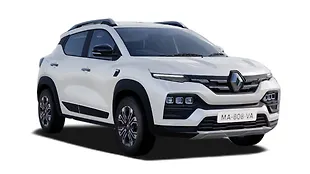
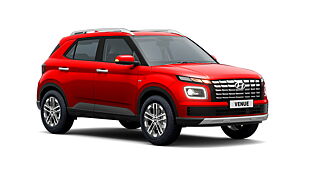
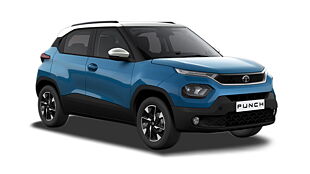
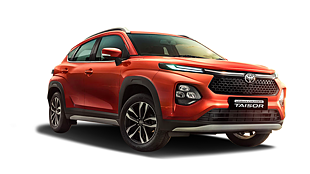
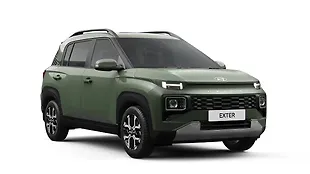
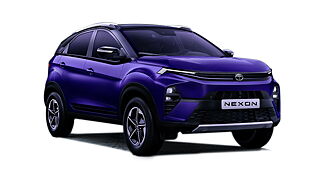
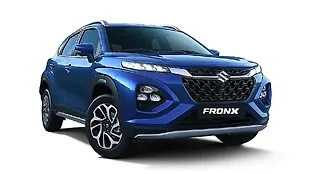

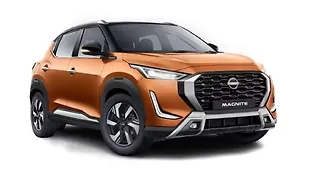
Explore Used Hyundai Venue
Colors
Reviews
- (108 Ratings) 95 Reviews
4.5/5
- Good Look and Good ComfortGood Car.... Performance is very good.... Comfort is good for family .. Value for money.. Long distance travel is easy for this car... and Good look and stylist car.. I love this car.Rating parameters(out of 5)4
Exterior
4Comfort
4Performance
3Fuel Economy
4Value For Money
About the ReviewerPurchase Not PurchasedDriven forFew hundred kilometersRead MoreWas this review helpful?32 - Airbag quality of this car is not good.Hyundai airbag quality is worst. after a huge accident none of any airbags are open in this car .when I went to complain for this Hyundai India denied to take this responsibility of new Hyundai venue. So I will suggest you for the safety measures please think to another option besides for Hyundai vehicles.Rating parameters(out of 5)4
Exterior
2Comfort
2Performance
2Fuel Economy
2Value For Money
About the ReviewerPurchase NewDriven forFew thousand kilometersRead MoreWas this review helpful?225 - Ownership Experience and short review at 5000km2019- 2020 venue SX O 1.0 Turbo My experience driving now at 5000 km run The pick up a bit slow though it has a turbo, 1.2 litre with Turbo would be awesome. Overall the car is great interior as well as exterior. Yet one major set back is Space - Yes, the back row knee room is Less and 5 well-built adults is impossible to adjust in. i20 has more knee room space as compared to the Venue. The other major concern is Suspension - At 5000km driven, the suspension feels very stiff or rather feels rigid. The soft bouncy feeling which absorbs the load is gone...and make indistinguishable sounds on potholes or uneven patch roads. And not only me but many Venue owners have grievances related to suspension, which I feel is a matter of concern the company needs to check and address. Will add my experience with further km driven.Rating parameters(out of 5)4
Exterior
3Comfort
3Performance
2Fuel Economy
3Value For Money
About the ReviewerPurchase NewDriven forFew thousand kilometersRead MoreWas this review helpful?203
- Home
- Hyundai Cars
- Venue [2019-2022]
- SX 1.0 (O) Petrol [2019-2020]

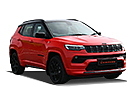
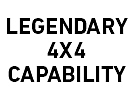

![Hyundai Venue [2019-2022] SX 1.0 (O) Petrol [2019-2020] Hyundai Venue [2019-2022] SX 1.0 (O) Petrol [2019-2020]](https://imgd.aeplcdn.com/664x374/cw/ec/35455/Hyundai-Venue-Right-Front-Three-Quarter-157521.jpg?wm=0&q=80)
![Hyundai Venue [2019-2022] Right Front Three Quarter Hyundai Venue [2019-2022] Right Front Three Quarter](https://imgd.aeplcdn.com/664x374/n/cw/ec/35455/venue-exterior-right-front-three-quarter.jpeg?q=80)
![Hyundai Venue [2019-2022] Right Rear Three Quarter Hyundai Venue [2019-2022] Right Rear Three Quarter](https://imgd.aeplcdn.com/664x374/n/cw/ec/35455/venue-exterior-right-rear-three-quarter.jpeg?q=80)

![Hyundai Venue [2019-2022] Rear View Hyundai Venue [2019-2022] Rear View](https://imgd.aeplcdn.com/664x374/n/cw/ec/35455/venue-exterior-rear-view.jpeg?q=80)
![Hyundai Venue [2019-2022] Left Rear Three Quarter Hyundai Venue [2019-2022] Left Rear Three Quarter](https://imgd.aeplcdn.com/664x374/n/cw/ec/35455/venue-exterior-left-rear-three-quarter.jpeg?q=80)
![Hyundai Venue [2019-2022] Left Side View Hyundai Venue [2019-2022] Left Side View](https://imgd.aeplcdn.com/664x374/n/cw/ec/35455/venue-exterior-left-side-view.jpeg?q=80)
![Second hand Hyundai Venue S 1.0 AT Petrol [2019-2020] Second hand Hyundai Venue S 1.0 AT Petrol [2019-2020]](https://imgd.aeplcdn.com/310x174/cw/ucp/stockApiImg/X5A2LLT_gfcdviye_1_48462484.jpg?q=80)





![Second hand Hyundai Venue SX Plus 1.0 AT Petrol [2019-2020] Second hand Hyundai Venue SX Plus 1.0 AT Petrol [2019-2020]](https://imgd.aeplcdn.com/310x174/cw/ucp/stockApiImg/VV53EDW_nvm5n8kj_1_49532493.jpg?q=80)

![Second hand Hyundai Venue SX Plus 1.0 Turbo DCT Dual Tone [2020-2020] Second hand Hyundai Venue SX Plus 1.0 Turbo DCT Dual Tone [2020-2020]](https://imgd.aeplcdn.com/310x174/cw/ucp/stockApiImg/XYNDMFP_k30leovr_1_48988692.jpg?q=80)